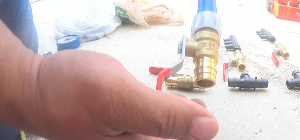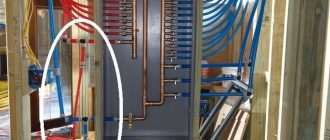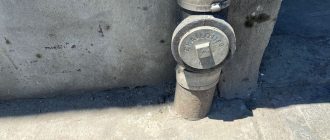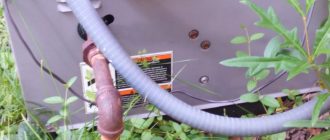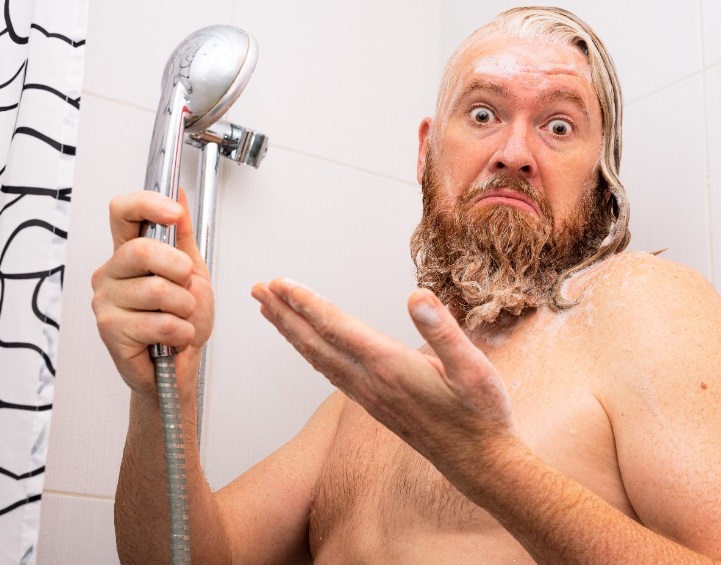
Reasons for Low Water Pressure
Dealing with low water pressure can be frustrating, whether you’re trying to take a shower or wash the dishes. Understanding the possible causes behind low water pressure is the first step in finding a solution. There are several factors that can contribute to low water pressure, ranging from simple issues that you can fix yourself to more complex problems that may require professional assistance.
One common cause of low water pressure is a clogged or blocked pipe. Over time, mineral deposits and debris can build up inside the pipes, restricting the flow of water. In this case, you may notice that the water pressure is low in multiple areas of your home. To fix this, you can try flushing the pipes by running the water for a few minutes to clear out any blockages. If that doesn’t work, you may need to call a plumber to remove the clog.
Another possible cause of low water pressure is a faulty pressure regulator. The pressure regulator is responsible for controlling the water pressure coming into your home from the main water supply. If the pressure regulator is not functioning properly, it can cause a decrease in water pressure. In this case, you may need to replace the pressure regulator to restore normal water pressure.
Old or corroded pipes can also contribute to low water pressure. Over time, pipes can rust or become damaged, leading to leaks or restricted water flow. If you suspect that your pipes are the cause of low water pressure, it’s best to consult a professional plumber. They can inspect your pipes and determine if they need to be repaired or replaced.
By identifying the cause of your low water pressure, you can take the necessary steps to resolve the issue. Whether it’s a simple fix or a more complex problem, don’t hesitate to seek professional help if needed. Everyone deserves proper water pressure for their daily tasks, so don’t let low water pressure slow you down!
Plumbing System Problems
Low water pressure can be caused by various issues in your plumbing system. It is important to identify and address these problems to ensure a satisfactory water pressure in your home.
One common cause of low water pressure is a clogged pipe or a blockage in the plumbing system. Over time, mineral deposits, debris, or other substances can build up inside the pipes, obstructing the flow of water. This can lead to reduced water pressure in your faucets, showers, or other water fixtures.
Another possible cause of low water pressure is a faulty pressure regulator. The pressure regulator is responsible for controlling the water pressure in your plumbing system. If it is not functioning properly, it may result in low water pressure throughout your home.
Leaking pipes can also contribute to low water pressure. When pipes develop leaks, water may be diverted away from the intended outlets, reducing the overall water pressure. It is important to regularly inspect your plumbing system for any signs of leaks and have them promptly repaired.
In some cases, low water pressure may be a result of the water supply itself. Municipal water systems may temporarily lower the water pressure to perform maintenance or address other issues. If you notice a sudden drop in water pressure, it is advisable to check with your local water provider to see if there are any known issues.
Overall, low water pressure can be a frustrating problem to deal with. By identifying and addressing plumbing system problems such as clogged pipes, faulty pressure regulators, or leaks, you can restore and maintain a satisfactory water pressure in your home.
Clogged Pipes and Drains
One of the common causes of low water pressure in a house is clogged pipes and drains. Over time, mineral deposits, sediment, and debris can build up inside the pipes, restricting the flow of water. This can result in reduced water pressure at the faucets and fixtures in your home.
There are several signs that indicate clogged pipes and drains may be the cause of your low water pressure. If you notice slow drainage, gurgling noises, or unpleasant odors coming from your drains, it’s likely that there is a blockage. Additionally, if the low water pressure is localized to specific areas of your home, it may indicate that there is a clog in those particular pipes.
To address clogged pipes and drains, there are a few potential solutions. One option is to use a chemical drain cleaner to dissolve the blockage. However, this can be harsh on your pipes and may not be suitable for all types of plumbing systems. Another approach is to use a plunger or plumbing snake to physically remove the clog. Alternatively, you may need to call a professional plumber who can use specialized equipment like hydro-jetting or pipe descaling to clear the blockage.
Regular maintenance is key to preventing clogged pipes and drains. Using drain stoppers or screens can help catch hair, food particles, and other debris before they enter the plumbing system. Additionally, periodically flushing your drains with hot water or a mixture of baking soda and vinegar can help break down any buildup.
Dealing with clogged pipes and drains can be frustrating, but addressing the issue promptly can help restore your water pressure and prevent further damage to your plumbing system.
Leaky Plumbing Fixtures
One common cause of low water pressure is leaky plumbing fixtures. When there is a leak in your plumbing system, water can escape and reduce the overall water pressure in your home. Leaks can occur in various areas, such as faucets, toilets, showerheads, and pipes.
To determine if you have a leak, you can start by checking your faucets and toilets for any visible signs of water leakage. Look for water dripping or pooling around the fixtures. You can also listen for any hissing or dripping sounds that may indicate a leak.
If you suspect a leak in your plumbing fixtures, it is important to address the issue promptly. Leaks not only waste water but also contribute to low water pressure. Depending on the severity of the leak, you may be able to fix it yourself by tightening connections or replacing worn-out parts.
However, if the leak is more extensive or difficult to locate, it is recommended to call a professional plumber. They have the necessary skills and tools to identify and repair leaks effectively. Ignoring a leak can lead to further damage to your plumbing system and result in even lower water pressure.
Regularly inspecting and maintaining your plumbing fixtures can help prevent leaks and ensure optimal water pressure in your home. It is a good idea to periodically check for any signs of leaks and address them as soon as possible. By taking proactive measures, you can keep your water pressure at a satisfactory level and avoid potential issues in the long run.
Faulty Pressure Regulator
If you are experiencing low water pressure throughout your home, a faulty pressure regulator may be the cause. The pressure regulator is a valve that controls the flow of water into your residential plumbing system. It is designed to reduce the pressure of the water coming into your home to a safe and manageable level.
Over time, pressure regulators can become worn out or damaged, leading to a decrease in water pressure. A defective pressure regulator may not be functioning properly and could be restricting the flow of water into your home.
To check if your pressure regulator is faulty, you can perform a simple test. Attach a pressure gauge to an outside faucet or the main water line to measure the water pressure. If the pressure is significantly lower than the recommended level, it may indicate that your pressure regulator needs to be replaced.
If you suspect a faulty pressure regulator, it is best to consult a professional plumber for further inspection and repairs. They will be able to diagnose the issue accurately and provide the necessary solutions to restore your water pressure.
Replacing a faulty pressure regulator is typically not a DIY project and requires specialized knowledge and tools. A professional plumber can ensure that the new pressure regulator is installed correctly and functioning properly.
By addressing the issue of a faulty pressure regulator, you can restore proper water pressure and enjoy better water flow throughout your home.
Sediment Buildup in Water Heater
One possible cause of low water pressure is sediment buildup in the water heater. Over time, minerals and other debris can accumulate at the bottom of the tank, reducing the space available for hot water and causing a decrease in water pressure throughout the plumbing system.
When sediment builds up in the water heater, it can restrict the flow of water and lead to a decrease in pressure. This can be especially noticeable when running hot water, as the sediment can create a blockage in the pipes leading from the water heater to the faucets.
To address this issue, it may be necessary to flush the water heater and remove the sediment buildup. This can be done by following the manufacturer’s instructions or seeking professional help. Flushing the water heater regularly can help prevent sediment buildup and ensure proper water pressure throughout the plumbing system.
In addition to low water pressure, sediment buildup can also affect the efficiency and lifespan of the water heater. The presence of sediment can reduce the heating capacity of the system, leading to longer recovery times and higher energy bills. It can also contribute to corrosion and other issues that can shorten the lifespan of the water heater.
| Signs of sediment buildup in the water heater: |
| – Decreased water pressure |
| – Noisy operation |
| – Inefficient heating |
| – Shortened lifespan of the water heater |
Municipal Water Supply Issues
Low water pressure can sometimes be attributed to issues with the municipal water supply. In some cases, the water pressure in an entire neighborhood or area may be low due to problems with the main water lines or distribution system.
One common cause of low water pressure in municipal water systems is a water main break. When a water main breaks, it can disrupt the flow of water and lead to a decrease in water pressure. Water main breaks can be caused by aging infrastructure, ground shifts, or other factors.
Another issue that can impact water pressure is high demand. During peak usage times, such as in the morning when many people are showering and getting ready for the day, water pressure can decrease due to the increased demand on the system. Municipal water supplies are designed to handle average daily usage, so spikes in demand can result in lower water pressure for a period of time.
Additionally, maintenance or repair work on the municipal water system can cause temporary decreases in water pressure. When crews are working on the water lines, they may need to shut off or divert water flow, which can impact water pressure in the surrounding area. Once the work is complete, water pressure should return to normal.
If you are experiencing consistently low water pressure and suspect it may be due to a municipal water supply issue, it is advisable to contact your local water department to inquire about any known issues or scheduled maintenance that may be affecting water pressure in your area. They can provide information on any ongoing work or disruptions in the system and give you an estimate of when water pressure is expected to return to normal.
It is also worth noting that while municipal water supply issues can be a cause of low water pressure, there may be other factors at play. It is always recommended to check for any issues within your own plumbing system, such as clogged pipes or faulty fixtures, before assuming the problem is with the municipal water supply.
Water Pressure Regulator Settings
Water pressure regulators are devices that are installed in plumbing systems to control and maintain the water pressure levels in your home. They are typically found near the main water supply line and can help ensure that the water pressure is at a safe and efficient level.
One of the reasons for low water pressure in your home could be that the water pressure regulator is set too low. The water pressure regulator settings can be adjusted to increase or decrease the pressure coming into your home.
To check and adjust the water pressure regulator settings, you will need to locate the regulator and remove the cover. Inside, you will find a screw or a knob that can be turned clockwise or counterclockwise to adjust the pressure. It is recommended to consult the manufacturer’s instructions before making any adjustments.
If you find that your water pressure is too low, you can try increasing the pressure by turning the screw or knob clockwise. However, it is important to be cautious as increasing the pressure too much can cause damage to your plumbing system.
On the other hand, if you find that your water pressure is too high, you can try decreasing the pressure by turning the screw or knob counterclockwise. This can help prevent potential damage to your plumbing fixtures and appliances.
It is important to find the right balance when adjusting the water pressure regulator settings. Too high of a pressure can lead to burst pipes and water damage, while too low of a pressure can result in inadequate water flow for daily activities.
If you are unsure about how to adjust the water pressure regulator settings or if you are experiencing persistent low water pressure issues, it is recommended to seek the assistance of a professional plumber who can help diagnose and resolve the problem.
By ensuring that the water pressure regulator settings are properly adjusted, you can help maintain a consistent and adequate water pressure level in your home for all your plumbing needs.
Old or Failing Well Pump
If you rely on a well for your water supply, an old or failing well pump could be the cause of your low water pressure. The well pump is responsible for bringing water from the underground source to your home, so if it’s not functioning properly, it can significantly impact water pressure.
Over time, well pumps can wear out or become clogged with sediment, reducing their efficiency and affecting water flow. This can result in decreased water pressure throughout your home.
If you suspect that your well pump is the culprit behind your low water pressure, it’s essential to have it inspected by a professional. They can evaluate the condition of the pump and determine if repairs or a replacement are necessary.
In some cases, a simple cleaning or maintenance procedure might be sufficient to restore water pressure. However, if the well pump is old or severely damaged, a replacement may be required. Investing in a new, efficient pump can not only solve the low water pressure issue but also improve the overall performance and reliability of your water supply.
Remember, only a trained technician should handle well pump repairs or replacements, as these systems can be complex and require specialized knowledge. They can conduct a thorough evaluation, diagnose the problem, and recommend the best solution to restore your water pressure.
Don’t let an old or failing well pump leave you with low water pressure. Take action and consult a professional to ensure your well system is functioning at its best.
Water Flow Restriction Devices
Water flow restriction devices are commonly used in plumbing systems to regulate the water pressure. These devices are designed to limit the amount of water that flows through the pipes, helping to maintain a steady and consistent water pressure.
There are various types of water flow restriction devices available on the market. One common type is a flow restrictor, which is typically installed at the point where the water enters the building. This device has a small opening that restricts the flow of water, reducing the overall water pressure.
Another type of water flow restriction device is a pressure regulator. This device is installed on the main water supply line and works by automatically adjusting the water pressure to a desired level. Pressure regulators are especially useful in areas where the water pressure is consistently high or fluctuates significantly.
Water flow restriction devices can help address low water pressure issues by reducing the amount of water flowing through the pipes. However, it is important to note that excessive use of flow restrictors or pressure regulators can also lead to inadequate water pressure and decreased water flow. Therefore, it is recommended to consult a professional plumber to properly assess and install these devices.
If you are experiencing low water pressure, it is advisable to check for any existing water flow restriction devices in your plumbing system. These devices may need adjustment or replacement to ensure optimal water pressure for all your plumbing needs.
Insufficient Water Supply
One possible cause of low water pressure in your home is an insufficient water supply. This can occur if there is a problem with your main water line or if your home is connected to a shared water system that is experiencing high demand.
If the main water line has a clog or a leak, it can restrict the flow of water to your home and result in low water pressure. Similarly, if you are connected to a shared water system and there is a high demand for water from other users, it can reduce the water pressure in your home.
To determine if an insufficient water supply is the cause of your low water pressure, you can check with your neighbors to see if they are experiencing similar issues. If they are, it is likely due to a shared water system problem. If you are the only one experiencing low water pressure, it may be an issue with your main water line.
To address an insufficient water supply, you may need to contact your local water utility or a professional plumber. They can inspect your main water line and make any necessary repairs or improvements. If you are on a shared water system, they may be able to adjust the water pressure to ensure that it meets your needs.
In some cases, increasing your water pressure may require installing a boost pump or upgrading your water supply system. A plumber or water utility professional can guide you on the best course of action based on your specific situation.
Overall, addressing an insufficient water supply can help increase the water pressure in your home and improve your overall water flow.
Addressing the Low Water Pressure
If you’ve been experiencing low water pressure in your home, it can be frustrating and inconvenient. Fortunately, there are several possible causes for low water pressure and solutions to address the issue.
One common cause of low water pressure is a clogged or blocked water pipe. Over time, mineral deposits, sediment, and debris can build up inside the pipes, restricting the flow of water. To address this issue, you may need to flush out the pipes or hire a professional plumber to clean them.
Another possible cause of low water pressure is a faulty pressure regulator. The pressure regulator is responsible for controlling the water pressure coming into your home. If it malfunctions, it can result in low water pressure. In this case, you may need to replace the pressure regulator to restore proper water pressure.
In some cases, the issue may be with the water main leading into your property. If there is a problem with the main water line, such as a leak or a blockage, it can cause low water pressure throughout your home. In this situation, you will need to contact your water utility company to address the issue.
If you have recently installed a new appliance, such as a dishwasher or washing machine, it may be affecting your water pressure. Some appliances require a certain water pressure to function properly, and if your home’s water pressure is too low, it can cause problems. To fix this, you may need to adjust the water pressure or install a pressure-boosting device.
In conclusion, low water pressure can be a frustrating problem that affects your daily routines. By identifying the possible causes and implementing the appropriate solutions, you can address the issue and restore adequate water pressure in your home.
FAQ:
What are some possible causes of low water pressure?
There are several possible causes of low water pressure. It could be due to a clogged pipe, a problem with the water supply line, a faulty pressure regulator, or a water leak in the system.
How can I check if there is a clogged pipe causing low water pressure?
To check for a clogged pipe, you can start by turning off all water-using appliances and faucets in your home. Then, open one faucet and check if the water pressure is still low. If it is, there may be a clog in the pipes.
What should I do if I suspect a water leak is causing low water pressure?
If you suspect a water leak is causing low water pressure, you can start by checking your water meter. Turn off all water sources in your home and check if the meter continues to run. If it does, there may be a hidden leak and you should contact a professional plumber to locate and fix the issue.
Can a faulty pressure regulator be the cause of low water pressure?
Yes, a faulty pressure regulator can contribute to low water pressure. The pressure regulator is responsible for controlling the water pressure in your home. If it is not functioning properly, it may be restricting the flow of water and causing low pressure.
How can I fix low water pressure in my home?
The solution to low water pressure will depend on the underlying cause. If there is a clog in the pipes, you may need to use a plunger or plumber’s snake to clear the blockage. If there is a problem with the water supply line, you may need to contact your water utility company. If there is a leak, it will need to be located and repaired by a professional plumber. If the pressure regulator is faulty, it may need to be adjusted or replaced. It is recommended to consult with a plumber to properly diagnose and address the issue.
What are some possible causes of low water pressure?
There are several possible causes of low water pressure, including clogged pipes, a faulty pressure regulator, a closed water valve, or a water leak.
How can I check if my pressure regulator is causing low water pressure?
To check if your pressure regulator is causing low water pressure, you can perform a simple test. Turn off all faucets in your home and then turn on one faucet. If the water pressure is low, try adjusting the pressure regulator to see if it improves.

